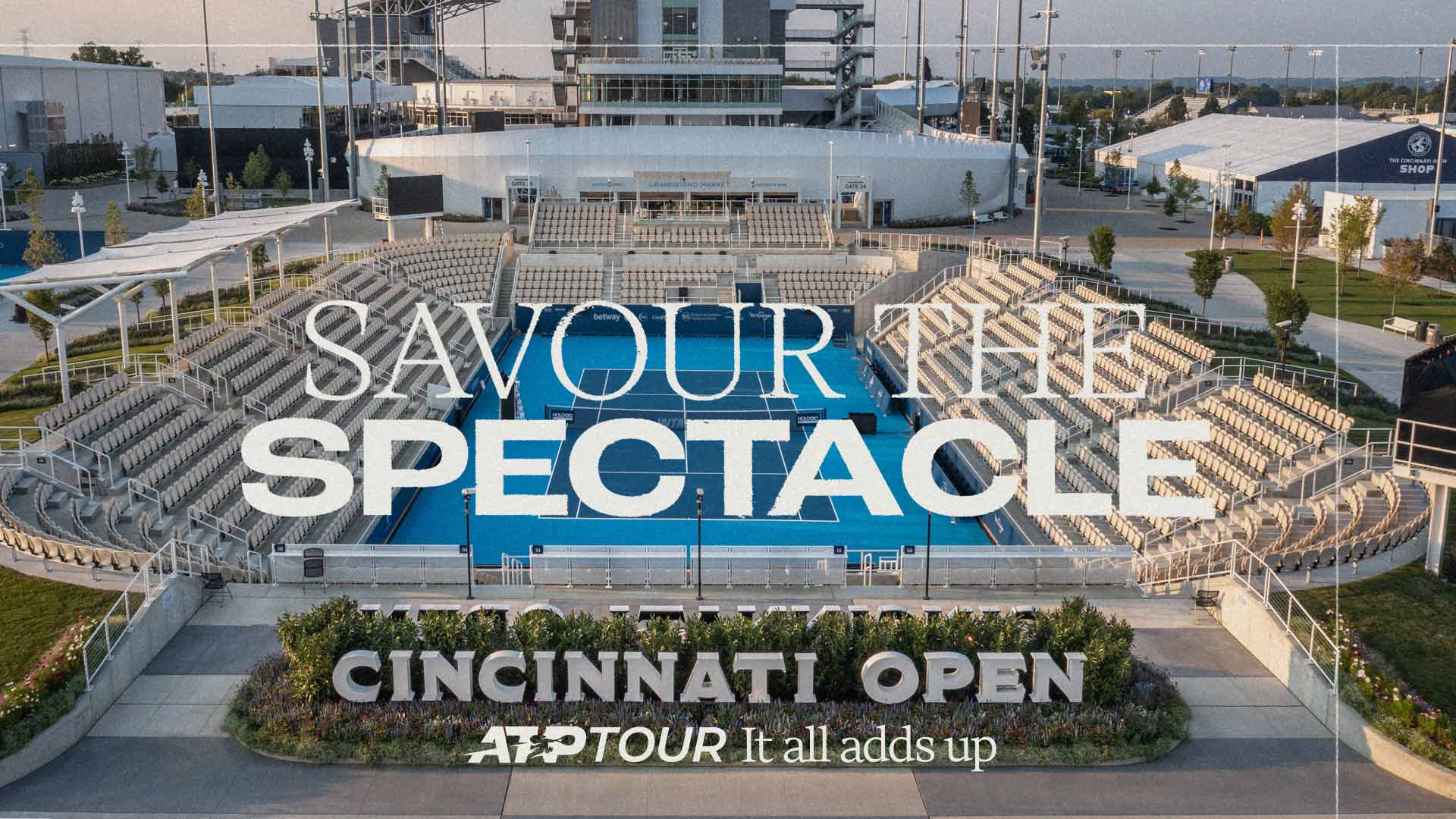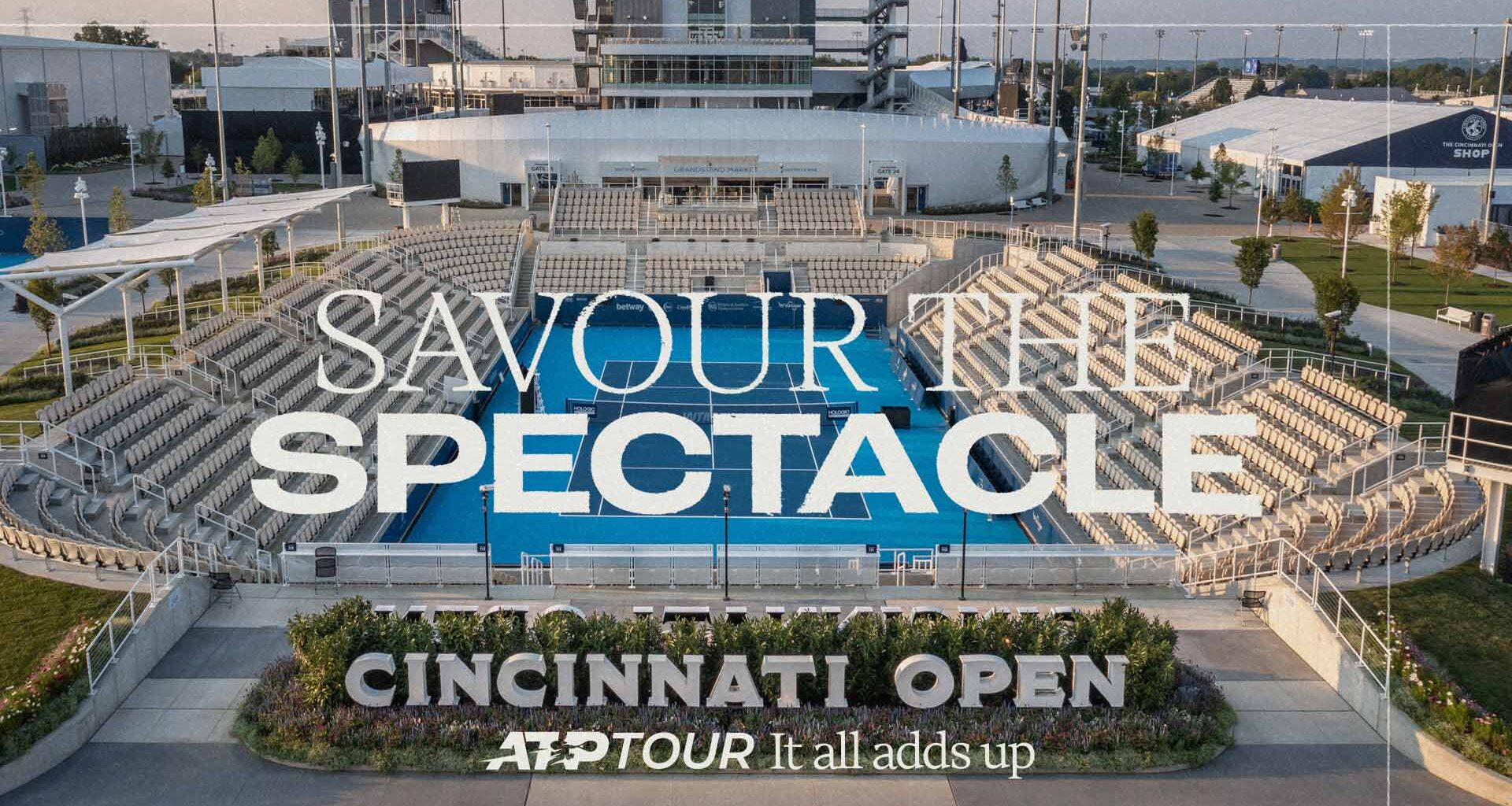Cincinnati
Inside the $260m transformation of the Cincinnati Open
Insight from tournament director Bob Moran and COO Jansen Dell
August 04, 2025

Josh Beeman
The Lindner Family Tennis Center is home of the Cincinnati Open.
By Andrew Eichenholz
One day after Jannik Sinner lifted the 2024 Cincinnati Open trophy, everything changed.
It had nothing to do with the No. 1 player in the PIF ATP Rankings. The Monday morning after last year’s event ended, tournament organisers immediately began an impressive transformation of the Lindner Family Tennis Center — the result of a $260 million investment made collectively with the City of Mason, Warren County and the State of Ohio — to double the campus size to more than 40 acres and create a memorable experience for fans and players alike.
In 328 days — the time span during which a majority of the work was completed — one of the biggest tennis tournaments in the world turned into an unforgettable campus where a sporting event meets the comfort of an amusement park.
Cincinnati Open Chief Operating Officer Jansen Dell said: “As soon as the finals ended, the following morning, we had crews on site to remove not only what the tournament setup was, but all of our furniture, all of our equipment. We had five days to take it off the site, and there were contractors who took over to start construction.”
Everyone who attends the ATP Masters 1000 event will immediately notice the differences, both big and small, with a keen attention to detail throughout the grounds and that will please fans and players alike throughout their time in Mason, Ohio.
Tournament Director Bob Moran said: “I want them to see a great event. I want them to see something that’s really, really special. And it doesn’t matter where you do it. It’s the fact that you’re doing something great in a place and putting your heart and soul into something.
“That shows through to the fans on TV, it shows through to the fans who are in the stands. It shows to the players or partners or volunteers that the group that’s putting this on, from ownership on down, is committed to creating an exceptional experience. And we hope that shows through in every asset that we have.”
When players used to pull into the facility, there were a series of trailers in a large parking lot for credential pickup, stringing and more. That space now hosts a state-of-the-art 56,000-square foot building called The Clubhouse, a de facto giant players’ retreat.
The biggest tennis stars in the world will enter the Cincinnati Open through a new, modern building that will accommodate all their potential needs. At the end of the initial hallway will be the tournament trophy, a clear reminder of the stakes at the Masters 1000 event. In the building will be a restaurant with plenty of space and seating both inside and outside, a coffee bar, copious lounge spaces indoors and outdoors, and a massive indoor recovery space with luxurious massage chairs.
There is plenty more to highlight around The Clubhouse, from the two padel courts to the abundance of synthetic turf — there is more than 72,000 square feet of it around the grounds — for players to enjoy. But there has also been a tremendous transformation to the Performance Center, which used to be the players’ lounge, dining, fitness centre and locker rooms all in one.
The bottom three floors of the building have been renovated, expanding locker rooms to two levels instead of only being on the bottom floor. The players will enjoy their new contemporary homes, which include cold plunges, physio tables and more.
The previous player dining is now a jaw-dropping gym, which players can reach not only from the within the Performance Center, but from a short walking bridge extending from the second floor of The Clubhouse. There are four gyms overall — two indoors and two outdoors — but the main one has a large nutrition bar, which will help players recover from their tough fitness sessions. These are just some of the new-and-improved amenities for players in Cincinnati.
“I can’t recreate the mountains of Indian Wells in Cincinnati, Ohio. But what we can do is have a really good effect on the few experiences that the players have when they’re here. And it’s both on site and off site,” Moran said. “On site, let’s just create the best spaces we can. Let’s provide the best food and service we can. Let’s have the best gym that we can. Let’s give them enough space to find their own place, find their own time when they want to get away. They have that.
“And then off-site, it’s like, ‘Hey, do you want to play golf? Do you want to go to a great restaurant? Do you want to go watch soccer to FC Cincinnati, or want to go to a Reds’ game?’ We are going to do all of these things.”
Fans will be blown away that the site has doubled in size, but they can get closer to the players than ever before. There are 31 outdoor courts — up from 17 in 2023 — with a fresh eye-catching two-tone blue colour scheme. There is a new block of 10 practice courts at the southern end of the facility, where fans can come within feet of their heroes.
“The practice courts, it’s important for me to give access so fans can see it. They can feel it. They don’t have to be on Centre Court watching a match,” Moran said. “They can be on a practice court watching their favourite player in the world, a player that maybe sometimes can’t get up, close and personal, but they can do it on a practice court. To me, that’s really an awesome thing.”
Cincinnati Open” style=”width:100%;” src=”https://www.atptour.com/-/media/images/news/2025/08/04/17/14/cincinnati-2025-grandstand-champions-practice.jpg”>
Photo: Andrew Eichenholz/ATP Tour
Just steps away from the new block of practice courts is the new 2,300-seat Champions Court, a sunken stadium just inside the new South entrance. As thousands of fans enter the Cincinnati Open, this will be their first touchpoint with the tournament. They can walk right up to the court and immediately see action the moment they arrive, without being blocked by daunting walls or obstacles.
The Cincinnati Open asphalt has been replaced with concrete, providing a far lighter, more comfortable feel for everyone in the intense North American summer heat and humidity. The various flowers, trees and shrubs throughout the grounds help make it feel like an amusement park, where fans have beautiful views everywhere they go, concessions available, but the attractions are tennis matches instead of a ride like at nearby Kings Island.
“The tournament’s always been known for its landscaping and the fact that it’s the largest floral show in the Midwest. As a tennis tournament, it’s pretty special,” Dell said. “We have 46,000 annuals, 30,000 perennials, and 1,300 trees. And I have been growing all of those in three and a half acres of greenhouse space since last fall. It’s local. Everything is grown here locally in Cincinnati [at] two different locations, about half an hour from here.”
There are so many new and transformed pieces of the Lindner Family Tennis Center, completed in nine sub-projects thanks to the planning of the Gensler firm and the contracting work of Barton Malow. Moran’s hope is that fans who have never been to the Cincinnati Open will simply give it a shot, because once people see it, they will be hooked.
The numbers that went into the project are staggering: 1,108 tonnes of steel, 71,883 tonnes of stone, 65,000 cubic yards of dirt excavated, roughly 40 miles of buried conduit, 5,000 strands of fiber stretching more than 14 miles, 3,500 strands of copper stretching 90 miles, 600 televisions and 250 Wifi access points. There are the small accents like the metal blending Stadium Court and Grandstand to make the architecture more appealing, and the tournament logo on the weights in the gym. But beyond the statistics are a lot of heart and passion that went into making a visit to the Cincinnati Open an unforgettable experience.
Dell concluded: “On one hand, what I want is that when they walk in, they say, ‘Wow’. As soon as you walk in the gates, you notice immediately that it’s a completely different tournament and that there’s a brand new Cincinnati Open with a transformed campus. I think that’s the initial reaction that I want people to have. And then after they’ve been here at the tournament, I want them to leave knowing that everything is different, but at the end of the day, it’s still the same Cincinnati Open they’ve loved for 126 years.”


